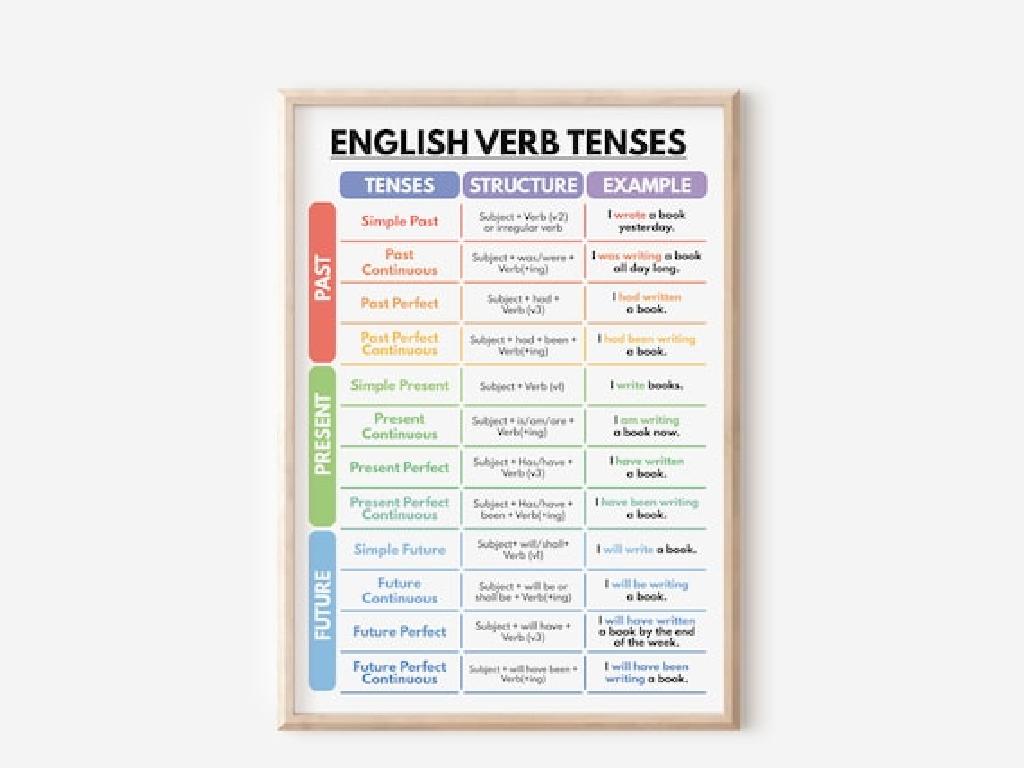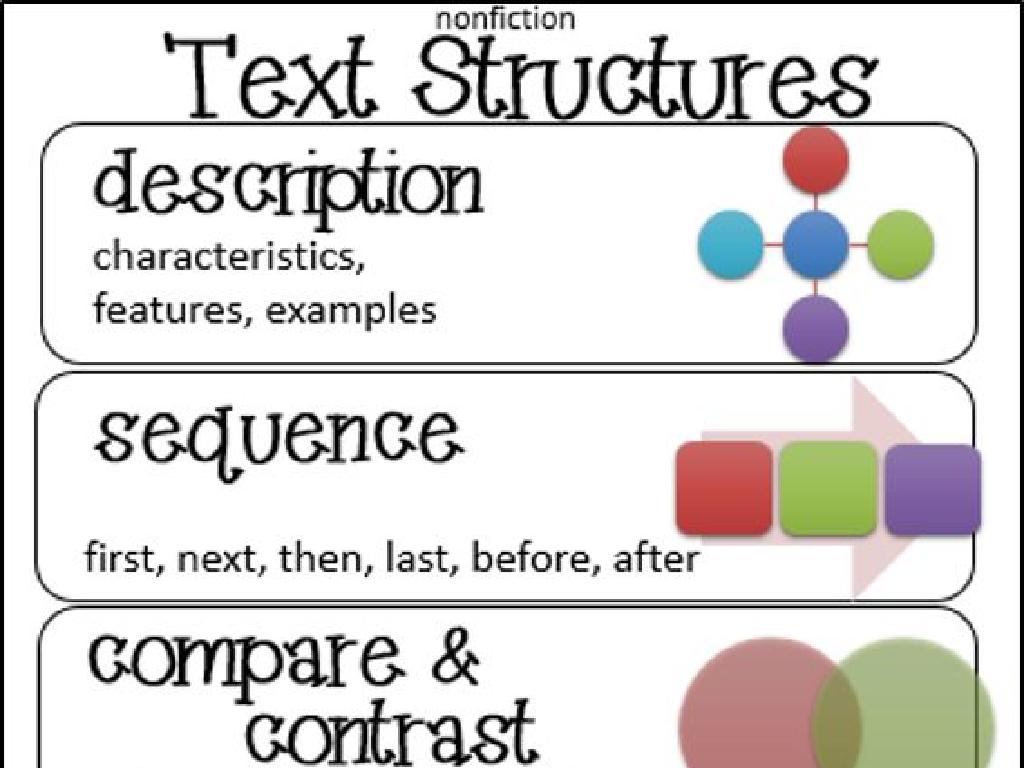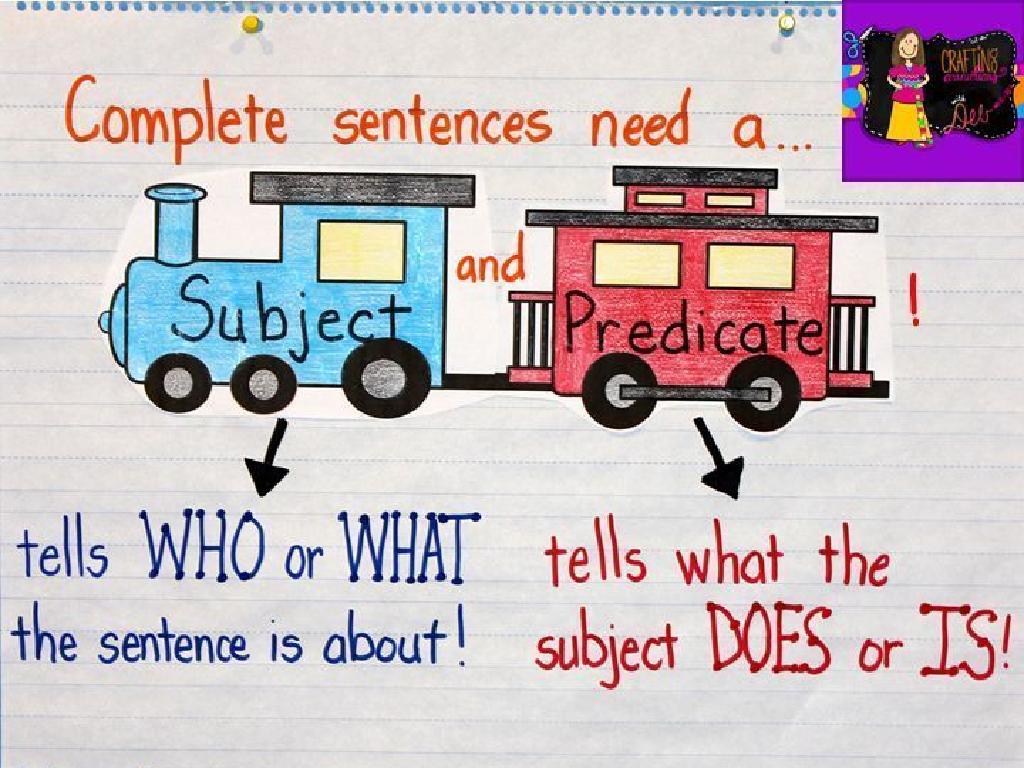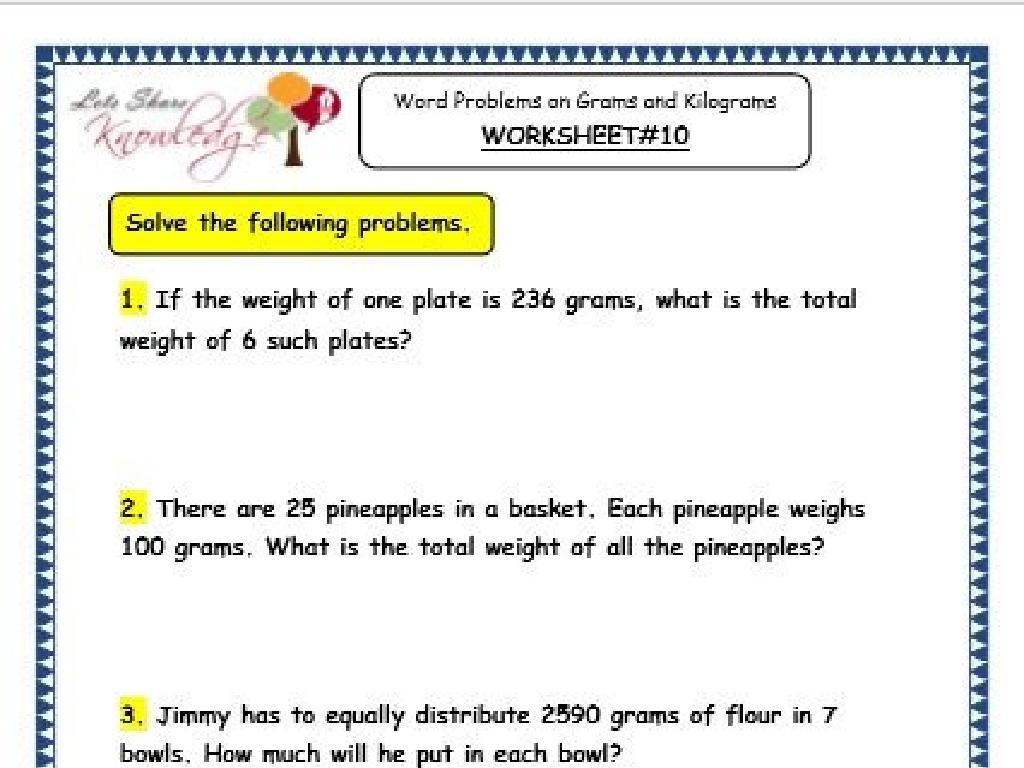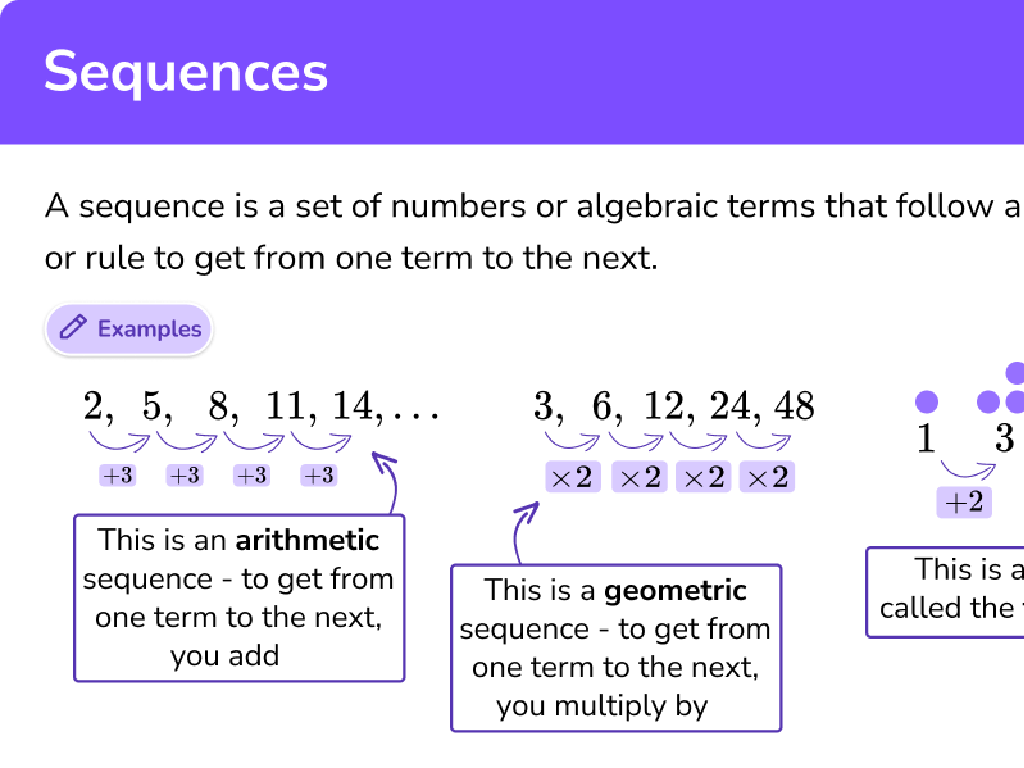Identify Personal Pronouns
Subject: Language arts
Grade: Fifth grade
Topic: Pronouns
Please LOG IN to download the presentation. Access is available to registered users only.
View More Content
Understanding Personal Pronouns
– What are personal pronouns?
– Words like ‘he’, ‘she’, ‘it’, ‘they’ are personal pronouns
– Pronouns replace nouns
– To avoid repeating the same nouns
– Reasons we use pronouns
– They make sentences less repetitive and more concise
– Examples in sentences
– ‘Maria likes chocolate. She eats it every day.’
|
This slide introduces the concept of personal pronouns to fifth graders, helping them understand how pronouns function in sentences to replace nouns. Emphasize that using pronouns helps avoid repetition and makes our speech and writing smoother and easier to follow. Provide examples of personal pronouns and show how they can replace proper nouns or common nouns in sentences. Encourage students to think of their own examples and to recognize the use of personal pronouns in their daily reading and writing. This foundational understanding will be crucial for their development in language arts.
Understanding Personal Pronouns
– Pronouns replace nouns
– Instead of ‘Sarah said Sarah lost Sarah s pen’, use ‘She said she lost her pen’
– They simplify sentences
– ‘The dog chased the dog’s tail’ becomes ‘It chased its tail’
– Examples: I, you, he, she, it, we, they
– Practice identifying pronouns
– Find pronouns in a paragraph and explain their use
|
This slide introduces the concept of personal pronouns to the students. Pronouns are words that take the place of nouns, which helps to avoid repetition and makes sentences clearer and more concise. Provide examples of personal pronouns such as ‘I, you, he, she, it, we, they’ and demonstrate how they are used in sentences. Encourage students to practice by identifying pronouns in sentences and replacing nouns with appropriate pronouns to see the difference. This activity will help them understand the role of pronouns in sentence construction. For homework, ask students to write a short paragraph and then rewrite it using pronouns to replace some of the nouns.
Exploring Personal Pronouns
– Personal pronouns represent people or things
– Like ‘he’ for a boy or ‘it’ for a toy
– They vary by number, gender, and case
– Singular ‘she’ or plural ‘they’, and masculine ‘he’ or feminine ‘she’
– Subject pronouns: I, you, he, she, it, we, they
– Used as the subject of a sentence: ‘I ate’, ‘she runs’, ‘they play’
– Object pronouns: me, you, him, her, it, us, them
– Used as the object of a sentence: ‘Call me’, ‘Tell her’, ‘See them’
|
This slide introduces the concept of personal pronouns to fifth graders, highlighting their role in representing specific people or things. Emphasize the use of personal pronouns to avoid repetition and make sentences clearer. Explain how pronouns change form based on number (singular or plural), gender (male, female, or neutral), and case (subject or object). Provide examples of subject pronouns used in sentences where they perform the action, and object pronouns where they receive the action. Encourage students to practice by identifying pronouns in sentences and creating their own examples. This foundational understanding will help them in constructing sentences and improving their writing skills.
Choosing the Right Personal Pronoun
– Deciding on the correct pronoun
– Singular vs. Plural pronouns
– Use ‘I’ when referring to yourself and ‘we’ when with others
– Pronouns and Gender
– ‘He’ for boys, ‘she’ for girls, ‘it’ for things without gender
– Subject vs. Object pronouns
– ‘I’ is used as the subject, ‘me’ is used as the object in sentences
|
This slide aims to help students understand how to choose the appropriate personal pronoun in a sentence. Start by explaining the decision-making process for selecting pronouns based on number, gender, and case. Emphasize the difference between singular and plural pronouns, using ‘I’ when speaking about oneself and ‘we’ when including others. Discuss gender-specific pronouns and the use of ‘it’ for non-living objects or animals whose gender is not specified. Clarify the concept of subject and object pronouns, ensuring students know that ‘I’ is used when the pronoun is the subject of the verb, and ‘me’ is used when the pronoun is the object. Provide examples and practice sentences to reinforce these concepts.
Personal Pronouns in Sentences
– ‘She’ replaces a girl’s name
– Instead of ‘Lisa’, we say ‘She loves to read books.’
– ‘They’ for a group of people
– Instead of ‘Mike and Joe’, use ‘They went to the park.’
– ‘I’ is used for yourself
– Use ‘I’ as in ‘I gave him a gift.’
– ‘Him’ refers to another boy or man
– ‘Him’ is used instead of ‘John’ in ‘I gave him a gift.’
|
This slide aims to help students identify and understand the use of personal pronouns in sentences. Personal pronouns are words that replace nouns and can refer to people speaking (I, we), people being spoken to (you), or people or things being spoken about (he, she, it, they). The examples provided will show students how pronouns can simplify sentences and avoid repetition. Encourage students to create their own sentences using different personal pronouns to reinforce their understanding. Discuss how each pronoun is chosen based on who is being referred to in the sentence.
Practice Time: Personal Pronouns
– Fill in the blanks with pronouns
– Partner up for the exercise
– Work together and help each other out
– Share your answers with the class
– Discuss why you chose those pronouns
– Understand pronoun usage
|
This slide is designed for an interactive class activity focused on personal pronouns. Students are to fill in the blanks in given sentences with appropriate personal pronouns, such as ‘he’, ‘she’, ‘it’, ‘they’, ‘we’, ‘you’, or ‘I’. Encourage them to work in pairs to foster collaboration and peer learning. After completing the exercise, each pair will share their answers with the class, providing an opportunity for discussion and reinforcing their understanding of pronouns. As a teacher, be prepared to guide the students through the activity, offer examples if needed, and correct any misconceptions. Possible activities could include filling in pronouns in a story, correcting sentences with incorrect pronoun usage, or creating sentences from scratch using a list of pronouns.
Class Activity: Pronoun Hunt
– Find personal pronouns in a book
– Determine subject or object pronouns
– Is it doing the action (subject) or receiving it (object)?
– List your pronouns with examples
– Example: ‘He (subject) threw the ball to her (object)’
– Share findings with the class
|
This activity is designed to help students identify and understand the use of personal pronouns in literature. Provide a brief review of personal pronouns and the difference between subject and object pronouns. Subject pronouns are ‘I, you, he, she, it, we, they’ and object pronouns are ‘me, you, him, her, it, us, them.’ Encourage students to choose their favorite book or story and look for personal pronouns used by the author. They should create a list and note whether each pronoun is used as a subject or an object. Afterward, students will share their findings with the class, which will reinforce their learning and provide public speaking practice. Prepare to facilitate the discussion and correct any misconceptions. Offer examples and be ready to guide students who may need additional support.
Wrapping Up: Personal Pronouns & Homework
– Recap: What are personal pronouns?
– Why personal pronouns matter
– They make sentences clear by replacing names.
– Homework: Craft 5 sentences
– Use ‘I’, ‘you’, ‘he’, ‘she’, ‘it’, ‘we’, ‘they’ in sentences.
– Get ready for a pronouns quiz!
|
As we conclude today’s lesson, remind the students of the definition and role of personal pronouns in sentences. Emphasize their importance in avoiding repetition and making sentences less cumbersome. For homework, students should write five original sentences, each using a different personal pronoun, to demonstrate their understanding. This will also serve as good practice for the upcoming quiz on pronouns. Make sure to provide examples of sentences using personal pronouns to guide them. In the next class, be prepared to review these sentences together and administer a quiz to assess their grasp of the concept.

